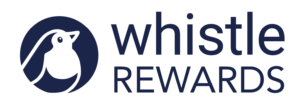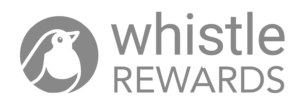Challenges with Employee Onboarding
(and How to Solve Them)
Onboarding new employees is critical yet challenging. The employee onboarding process can determine how a new employee views your company, how quickly they engage in their role and how prepared and supported they feel. Although HR professionals are constantly seeking out ways to improve the process, most employees want more. And, more than half of employees say they would be better at their jobs with better onboarding.
Common employee onboarding issues including poor employee experiences, missing (and often required) equipment, and a lack of internal communications have only contributed to the growing headaches that many HR departments face following the pandemic. Employees aren’t shy to call these experiences out. Better onboarding improves employee satisfaction across the organization, boosting engagement and productivity.
Here’s how to tackle the most common challenges when building your onboarding process.
Make employee onboarding a good experience
Most companies opt for a generic employee onboarding process with outdated protocols that leave employees feeling like cogs in a machine. This tedious process leaves employees frustrated, coloring their overall impression of the company negatively from the first day.
outdated protocols that leave employees feeling like cogs in a machine. This tedious process leaves employees frustrated, coloring their overall impression of the company negatively from the first day.
Employee onboarding typically consists of general orientation and a presentation about the company’s values, goals, and structure. The employee is then prompted to complete paperwork and given a start date to begin their duties. Often, there are also short quizzes to demonstrate the employee sat through the presentation. In most cases, employees simply begin work after this dull ramp-up period.
This formula may have worked in the past, but not anymore. There are currently two open jobs for every person looking for work. Businesses have to consider the personal wellness of their employees and start to offer more fulfilling experiences. The experience should be one you’d be proud to have your sister go through.
Figure out how to engage your people in a hybrid model
Adjusting to a new company may mean adjusting to a new working model, such as hybrid work. This can be difficult for staff as well as managers. You need to ensure staff have all the tools they need to thrive such as prep materials, hardware, access credentials, etc. According to Gallup, 53% of employees reported a preference for hybrid working models.
 This hybrid approach is not as straightforward for companies in manufacturing, healthcare, or hospitality because they rely on in-person interactions and activity. In these cases, making sure any additional material is readily available during employee onboarding should be a priority.
This hybrid approach is not as straightforward for companies in manufacturing, healthcare, or hospitality because they rely on in-person interactions and activity. In these cases, making sure any additional material is readily available during employee onboarding should be a priority.
Guidance, feedback and overall interpersonal connections have been massively strained since Covid. Develop a process to provide critical elements such as recognition to a remote team. Too often managers fall prey to Eisenhower Paradox: we procrastinate doing the things that are important but not critical to complete immediately. We go through our email in-box rather than recognizing a colleague. Unfortunately, that missed recognition is essential to your colleague feeling valued.
Struggling to provide a good working model for employees will result in issues that may snowball into bigger problems for the organization.
Access to Internal Resources Is Scarce
Employees should have a transparent understanding of a company’s internal resources, including technology, infrastructure, and subject matter experts. Gaining an understanding of available internal resources and having access to them empowers employees to feel more responsible for managing their responsibilities.
Companies can encourage access to internal resources by implementing a system that rewards employees for learning more about the company. It can include any internal processes, core values, culture, communication preferences, and even expectations beyond the specific job they recently started. This type of employee onboarding program also serves to further enrich employee’s experience and sense of fulfillment at work.
The way people work has fundamentally changed, so businesses processes like employee onboarding must change, too. They can start by providing employees with accurate internal frameworks and processes for obtaining the resources they need.
How to Make a Better Employee Onboarding Experience
Here are some tips on how to make the employee onboarding experience better.
Get employees excited to come to work.
Before a new hire begins a role, you may want to:
- Proactively engage with the new staff – send a physical or virtual “welcome”
- Provide new staff with materials and tools they may need prior to starting
- Send a welcome email (or text message) with helpful “Day One” information
- Share a team video to “get to know” the people they’ll be working with
Personalize the content and flow of information.
Avoid the cookie-cutter approach in your onboarding program by adding unique components based on the new employee’s role, title, or level in the organization.
- Location- or role-specific information
- Compile helpful “Employee Tips” from similar roles/levels across the organization
- Workflows to ensure new employees set up appropriate communication tools and profile information
Structure workplace interaction — virtual, in-person & hybrid.
When people have good relationships with colleagues, they are happier, more productive, and likely to stay longer.
- Pre-schedule ‘meet and greets’ between new employees and various team members
- Encourage interactions by offering to pay for lunch
- Provide ‘culture-building’ budgets for team lunches, happy hours, etc., but make sure to keep them optional
Adopt user-friendly technology.
Technological advances like automation and gamification can transform box-checking activities into a gamified experience. Software that can provide packaged solutions and integrate with other systems also helps HR teams quickly put their ideas into action.
The end goal is to provide an employee onboarding experience that welcomes new employees and makes them feel capable and confident to outperform expectations.
Conclusion
The nature of work will continue to evolve so businesses must adapt and implement solutions that eliminate friction. Workers will rule out companies that fail to acknowledge and fix known issues like poor onboarding, chaotic work environments, and scarce internal resources — making it harder to attract and retain quality talent.
At Whistle, we have reinvented what it means to put employees first by designing solutions around the employee instead of the administrator.
If you’d like to learn more about how Whistle’s clients have transformed employee onboarding, leadership training, and more critical people programs, you can schedule a free demo today.

Chris Dornfeld is the President and Co-founder of Whistle. With a background spanning several start-up companies, global corporations, higher education and government as the CIO for the City of St. Louis – Chris has a unique vantage point on engagement, culture, technology and our changing workexperience.
 Drew Carter is the CEO and Co-founder of Whistle. Drew brings a combination of executive leadership, business strategy, technical software experience and data analytics to his work. He has worked in large and small corporations, worked in industry building software products enjoyed by millions and served as a consultant helping companies better compete in the digital age.
Drew Carter is the CEO and Co-founder of Whistle. Drew brings a combination of executive leadership, business strategy, technical software experience and data analytics to his work. He has worked in large and small corporations, worked in industry building software products enjoyed by millions and served as a consultant helping companies better compete in the digital age.









